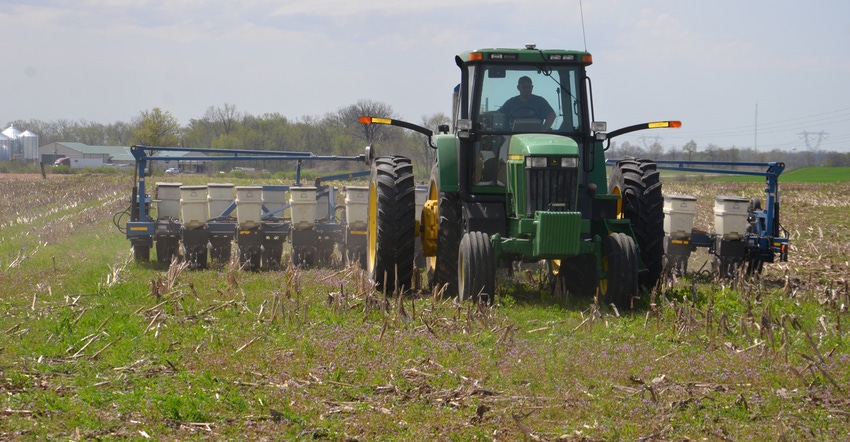February 8, 2022

Indiana producers face two broad challenges over the next few decades on top of day-to-day and seasonal challenges. The first is that food, fiber and fuel must be produced in adequate quantities to feed and provide needed products for a growing population. The second major challenge farmers face is growing environmental issues such as the hypoxic zone in the Gulf of Mexico and the algal blooms in Lake Erie.
Regarding food, fiber and fuel, production of large numbers of high-quality agriculture products is what American farmers do best. Technology has improved corn yields drastically over the last few decades. But will technology be able to continue improving yields to offset increasing demand and decreasing acres of farmland?
Regarding environmental issues, many nutrients that cause these problems are traced to soil erosion and water quality issues on agricultural land. While farming is not the only contributor to the problem, it is part of the problem. The agriculture industry will need to face the problem head on in a proactive manner.
Tackle ag challenges
So how can farmers be more proactive in tackling these two issues? How can they work on both challenges at the same time?
The answer lies beneath the soil’s surface — maximize soil health, making it more productive, resilient and efficient while reducing soil erosion and improving water quality.
Farmers discovered a few basic principles that work to improve soil health on both pastureland and cropland. What are these principles?
Simply put: Stop tilling the soil, improve diversity, keep a growing root as much of the year as possible and keep the soil surface covered all the time.
While not complicated, the important part to remember is that they all need to be implemented together as a management system to improve soil health. Develop a solid but flexible plan, gleaning information from others who are making it work in your area. Being flexible is imperative. You may have some failures, but if you start a journey toward soil health and keep moving forward, you will be part of the solution to these production and environmental challenges.
These concepts, along with a solid nutrient management plan, will go a long way in reducing the amount of sediment and nutrients reaching our nation’s waterways. They will also go a long way in building healthy soil capable of being resilient during changes in weather conditions and producing a stable yield of high-quality products that can be grown with less inputs. This has the potential to result in more long-term profit for you. These improved efficiencies will become even more important if commercial input costs remain high.
Adopt and adapt
These soil health systems will require some of you to test your management skills. Yet they are achievable and essential to changing the paradigm of farming for the 21st century. What will be your role in this new paradigm?
The future can be a bit frightening, but it can also be very exciting, especially for young farmers as they find themselves part of the next great revolution in American agriculture history.
For more information on development of a soil health system on your farm, please contact your local soil and water conservation district or Natural Resources Conservation Service office.
Donovan is a district conservationist with the Natural Resources Conservation Service. He writes on behalf of the Indiana Conservation Partnership.
About the Author(s)
You May Also Like






